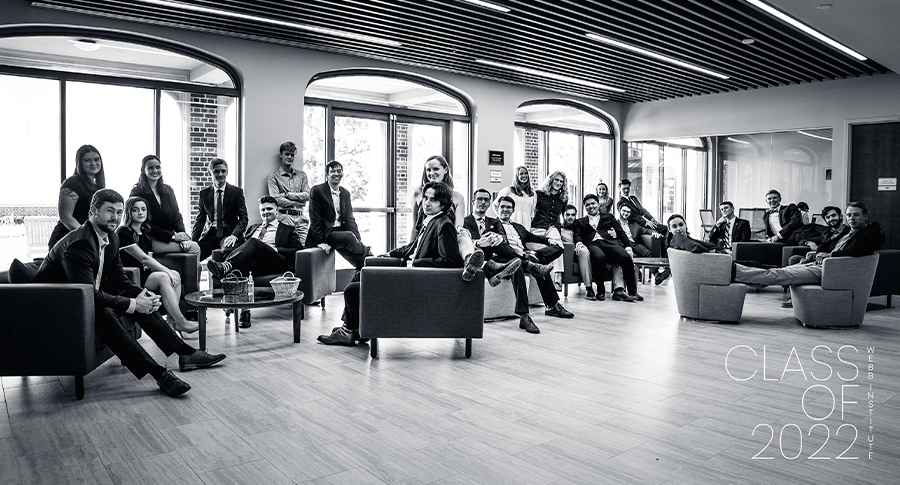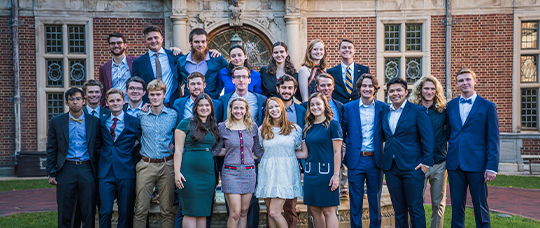In no particular order.
A Feasibility Study and Concept Design of a Modular Battery System for Small Vessels
Anika Breza and Minh Tran
The thesis is divided into two objectives: a feasibility study and a concept design. The aim of the feasibility design is to determine if a ship powered by a battery module is feasible or if the module would be more suitable for hybrid applications. The feasibility study will include research of estimated cost, charging time, and installation processes. The design parameters for the module will be determined from the feasibility study. The concept design will specify the specifications and components of the modular battery system and its integration into an existing vessel.
Wave Response Characteristics of Submerged Floating Tunnels in Varying Conditions
Christopher Hamilton and Jim Rodgers
Submerged Floating Tunnels (SFTs) are an experimental method of crossing bodies of water that avoids construction difficulties due to water depth. This thesis aims to provide data on the physical responses of SFT’s to various wave frequencies. A computational fluid dynamics analysis will be performed, and a physical model will be built and tested in the Robinson Model Basin with the intent of validation the CFD results.
A Computational Fluid Dynamics Analysis of the Unsteady Calm Water Resistance of
Slender Hulls Under Harmonic Surge Excitation
Calder Hartigan
The surge motions of rowing shells pose unique challenges for both experimental and numerical resistance prediction. Potential flow codes appear to be capable of accurately predicting the resistance of slender hull forms experiencing periodic surge motions but have reduced accuracy at higher frequencies representative of real-world rowing conditions (Doctors et al., 2010). The objective of this thesis is to assess the value of the prediction capability of fully viscous CFD codes for the unsteady calm water resistance of a Wigley hull under harmonic surge excitation by replicating the model tests of Doctors et al. (2010), ultimately increasing the published information regarding rowing shell hull design.
A Simplified Test for Recreational Vessel Stability
Toni-Marie Gossage and David Ockers
The objective of this thesis is to create a stability test for recreational vessels over 20 feet in length by comparing the results of an inclining experiment and a sallying test. This thesis expands upon the research of Dan Turoff that was completed in 2015.
Rules Based Design: Automation of a Vessel General Arrangement
Rebecca Teitelbaum
The objective of this thesis is to create a preliminary deckhouse general arrangement based on the MSC Rules for New Construction Large Ships. It will be in the form of a python program. The user will input basic information such as crew, endurance, and principal dimensions. From there, an Excel sheet with required space sizing will be output. Then, a drawing in AutoCAD will be produced as a preliminary arrangement, accounting for the relative location of spaces.
Analysis and Optimization of Power Plant Selection for Harbor Tugboats
Ben Lilly
A number of propulsion plants will be analyzed on an 80′ harbor tugboat, considering their capital cost, operating costs, and emissions as factors in the selection. The emissions are factored into the economic analysis by applying a hypothetical carbon tax based on the social cost of CO2 emissions. Machinery arrangements will then be created for each power plant considered to determine whether each power plant can be installed within the machinery space of the selected tugboat. The results for the tugboat analyzed will then be generalized for all harbor tugboats. The power plants that will be analyzed include diesel mechanical, diesel electric, all electric, and various hybrid and alternate fuel plants.
A Feasibility Study of the Installation and Operation of a
Floating Offshore Windfarm in the United States
Luke Kiely
The objective of this thesis is to compare the levelized cost of energy (LCOE) of a planned fixed-base windfarm to a theoretical floating wind farm in the United States. Multiple sub-structures and energy transportation methods will be explored for the floating windfarm to find the optimized model to compare to the fixed-base windfarm.
Improving the Pathfollowing Capabilities and User Interface of Webb Institute’s ASV
Kevin Becker
Autonomous surface vessels (ASV) have traditionally been expensive, and proprietary. This makes it difficult for schools or research institutions with small budgets to gain access to any maritime robotics tools. This thesis will continue the work of Isaac Kremers (’17), Nicholas Ratinaud (’18), and Max Haland (’21) by assessing and improving the path following capabilities and user interface of the autonomous surface vessel.
An Investigation of the Optimal Design of an Allam-Fetvedt Cycle
Kevin O’Keefe and Gracie Schmitz
With growing environmental concerns around the globe, there has been an increase in the number and intensity of emissions regulations. As a result, new advancements in power generation have focused on reducing emissions while maintaining a high efficiency. One promising advancement is the Allam-Fetvedt Cycle developed by 8Rivers and NETPower. The objective of this thesis is to identify the design and configuration of the Allam-Fetvedit cycle that results in the highest thermal efficiency.
Modeling and Robust Optimization of Slurry Flow using the
Delft Head Loss and Limit Deposit Velocity Model
Christopher Harris
The goal of this thesis is the modeling and robust optimization of variable speed pumps in a slurry system.
Automation of the Creation of Marine Electric One Line Diagram Drawings
Kyle Oliver
The goal of this thesis is to create a program that automates the creation of a One Line Diagram drawing for any marine electrical plant.
Case Study on a Fully Electric Repowering of a Small Craft
Rudy Caligure and Nathan Johnson
The goal of this thesis is to create a fully-electric repowering package for a 50ft workboat owned by the Chesapeake Bay Foundation. This repowering package will include all the required information for the Chesapeake Bay Foundation to carry out this repowering in the future as they hope to transition their fleet to cleaner energy solutions.
Analysis of the Hydrodynamic Performance of a Hydrofoil in an Unsteady Velocity Field
Flora Grilli
The goal of this thesis is to analyze the hydrodynamic performance of a foil advancing in an unsteady velocity field close to the free surface. More specifically, a computational fluid dynamics model is used to simulate a two-dimensional NACA 0012 section at some finite distance below the free surface, while waves are generated at the free surface. The performance of the hydrofoil is analyzed by recording the lift to drag ratio of the foil in various environmental and operating conditions. The model used in this analysis is LilyPad.
Motion Response of a Tension Leg Platform (TLP) in Incident Waves
Ioana Mirica
The goal of this thesis is to determine the hydrodynamic response of a tendon leg platform offshore wind turbine through potential flow analysis. The thesis is completed using DVNGL’s software, HydroD, and integrated potential flow solvers, Wadam and Wasim. Results are validated using a TLP model with results from Juska and Lindyberg (2021).
Reverse Engineering a Vessel’s Hydrostatics to Generate the Hull Geometry
Jonas Armstrong
The objective of this thesis is to generate a three-dimensional computer model of a vessel’s hull using data from the readily-available hydrostatic tables required by regulations.
The Design, Build and Test of an Oscillating Water Column Wave Energy Converter
Sasha Kritsuk and Juliette Lehman
The objective of this thesis is to create a model oscillating water column wave energy converter to drive a turbine to output power.


